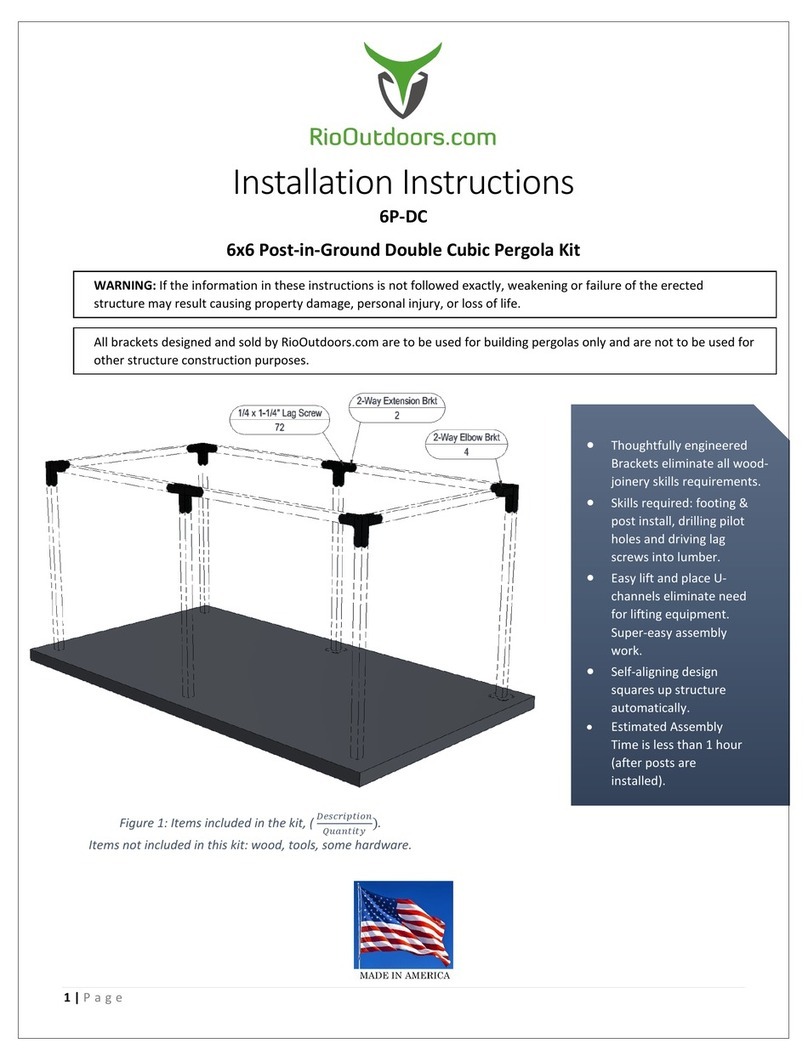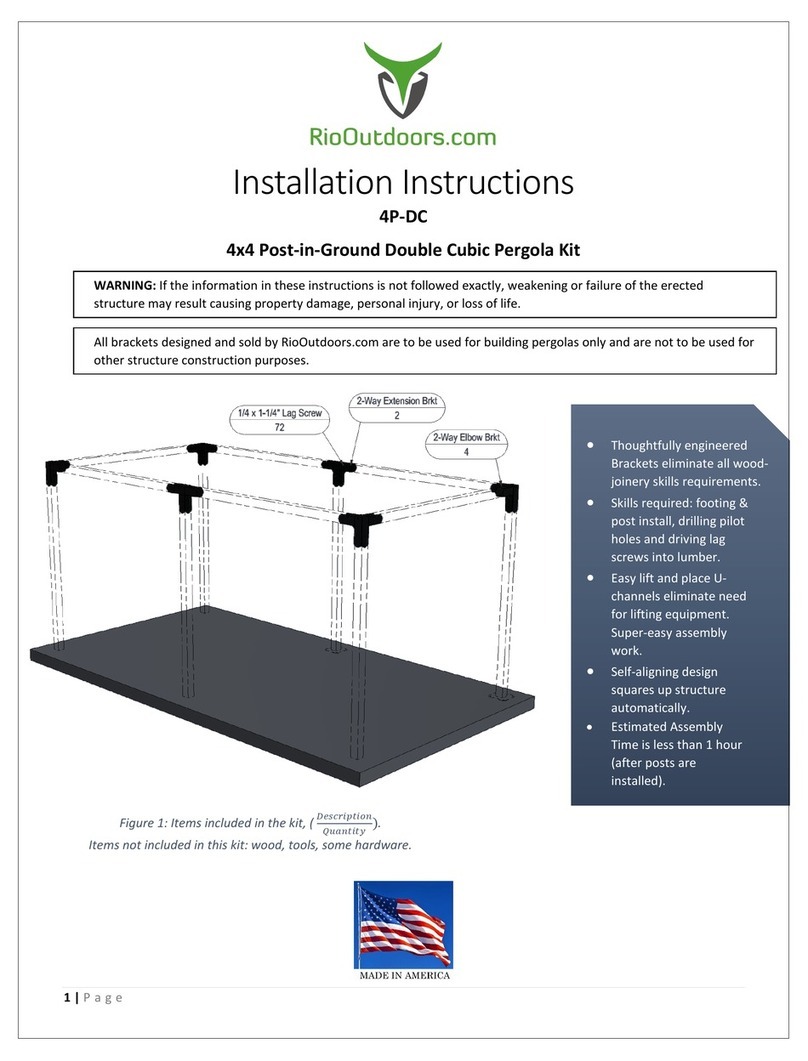
8 | Page
1.5.3 Call 811.
811 is the national call-before-you-dig phone number. Anyone
who plans to dig should call 811 or go to their state 811
center's website before digging to request that the
approximate location of buried utilities be marked with paint
or flags so that you don't unintentionally dig into an
underground utility line.
Consult with your local building permit office and obtain any
required building permits and formal information related to
required footing depth and diameter for your locality.
1.5.4 Install the Post-in-Ground footing
system.
1. Excavate the required hole diameter and depth. Dig
down an additional 6” in depth.
2. Fill the bottom 6” with loose gravel. The loose gravel
will help keep water from pooling at the bottom of
the post and will prevent rotting of the post bottom.
3. Set each post on top of the gravel. Level each post.
Support the post using cross 2x4 members or other
means.
4. Use a laser level to see if the post heights vary
among all posts. All posts top should be on the same
plane. If a post is too low, add more gravel under the
post to lift the post up. If a post is too high, remove
some gravel and lower the post.
5. Once all posts are level and all posts’ top surfaces
are on the same plane, pour the concrete around the post.
6. Work in 6” incremental depths. Tap concrete with the tip of
a trowel to remove air bubbles. Work upward until you
reach ground level or 1” below ground level, depending on
your desired final finish appearance. You may stop 1” below
the surface so you can over fill with some dirt and plant
grass around the post or you may fill all the way up to
ground level.
7. At this point, create downward tapered profile moving away
from the post in all directions on the concrete top surface.
This taper will help water flow away from the post.
8. Wait 7 days for the concrete footing to cure before
proceeding with the remaining construction work. If quick-
setting concrete is used, cure times may be shorter; read
the information on the concrete bag or ask your concrete
supplier.
































